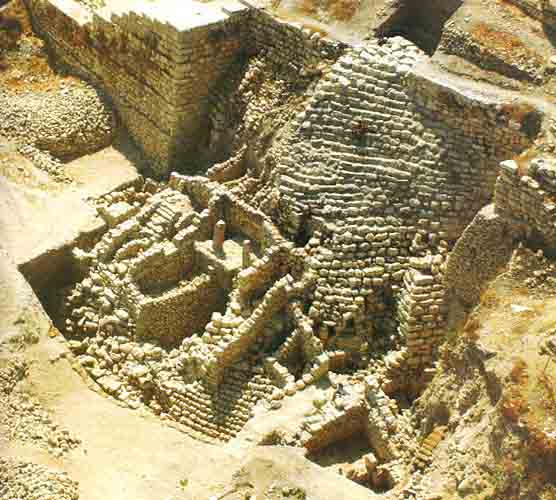Image Details

Zev Radovan
The stepped-stone structure, an imposing edifice on the eastern ridge of the City of David, the oldest part of Jerusalem, originally stood 90 feet tall and, at its top, 130 feet wide. It probably supported a major building or series of buildings above it. Specialists disagree over just when the Stepped-Stone Structure was built—opinion ranges from the late 13th to the late 10th centuries B.C. But whatever the exact date of its construction, the structure shows that during the Late Bronze Age and Early Iron Age, Jerusalem could boast of impressive architectural achievements and had a population large enough to engage in a huge public works project.
In recent years some scholars, known as Biblical minimalists, have pointed to the paucity of remains from 17th- to 9th-century Jerusalem as an indication that the city was little more than a backwater—not at all the grand capital of David and Solomon described in the Bible. But in the accompanying article, Hershel Shanks counters this assertion by identifying various factors that account for this paucity and concludes that Jerusalem was almost certainly a significant city throughout the centuries over which the minimalists cast their doubts.
